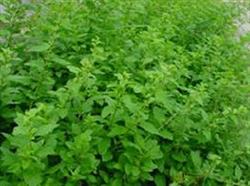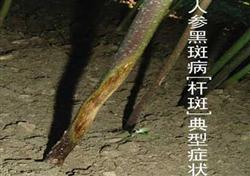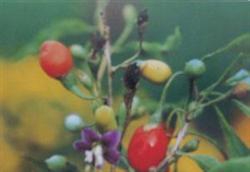New management technology of ginseng shading net shed

Burdock is a biennial herb with straight roots belonging to the Compositae family. It is also known as Oriental radish. It is called Dali seed in traditional Chinese medicine. The fleshy root is rich in nutrients. According to the analysis, every 100 grams of fresh root contains 4.1 grams of protein, 0.1 grams of fat, 3.5 grams of carbohydrates, 1.5 grams of cellulose, calcium, phosphorus, iron, thiamine, riboflavin and so on. It has high medicinal value and nutritional value. Indications cough, sore throat and other symptoms. Regular consumption can prevent diabetes and hypertension, prevent premature aging of the human body. Burdock is a kind of nutritious and healthy vegetable that Japanese people like to eat. As a new foreign exchange earning vegetable, yield per mu 1500 kg, considerable benefits, has a better development prospects. 1. Burdock selected for the straight root system, soil conditions suitable for root length of up to 1 m. The specifications for exporting roots to Japan require more than 65 cm in length and no lateral fibrous roots. Therefore, it is necessary to select fertile soil, loose texture, good drainage, pH6.5~7.5 sandy loam cultivation. Do not select other soil types, otherwise the required root length will not be achieved or lateral roots will be produced, and the grade will be reduced. 2. The length of fleshy root of burdock is a main index to measure its quality. In order to ensure the quality of soil preparation, loose planting belts with a width of 30 cm and a depth of 80 cm must be dug out according to the row spacing of 70~80 cm to facilitate the root system. Care should be taken not to dig the planting strip too shallow, so as not to reduce the yield and length standards. Digging the planting belt should not disturb the topsoil and clean the stones at the same time. 3. The amount of fertilizer required for burdock fertilization is relatively large. For plots with a yield of 1500 kg per mu, 6 cubic meters of high-quality agricultural fertilizer, 5.3 kg of pure nitrogen, 12 kg of phosphorus pentoxide and 7 kg of potassium oxide are required as base fertilizer. Apply to 25 cm soil layer, mix evenly, otherwise it will form lateral roots in the fertilizer concentration. After fixing seedlings, apply ammonium nitrate 15 kg, on one side of planting ditch, 5 cm away from seedlings. 4. Sowing according to row spacing 70~80 cm, ridge spacing 25 cm, ridge height 15 cm in the dug planting belt ridge. Soak seeds in warm water at 40~50℃ for 4 hours, rinse off seeds, and wrap them in damp cloth for sowing. The suitable sowing time is about May 5, planting in holes according to plant spacing of 8 cm, 3~4 seeds per hole, covering soil 2 cm, slightly suppressed. 5. Thinning burdock seedlings to grow to 2~3 leaves when the seedlings, leaving only one plant per hole, get rid of sick plants, weak plants. Burdock grows luxuriantly, reasonable close planting can grow qualified fleshy root. The lack of seedlings and broken branches will form ultra-thick roots and short roots with lateral roots. Burdock is not suitable for transplanting, because the transplanted seedlings will form lateral roots after root damage. Therefore, equidistance seedling protection is the key to ensure the length of fleshy roots and no lateral roots. 6. Intertillage weeding burdock grow 2~3 leaves when weeding. Be careful not to expose the petioles to the topsoil to avoid the white petioles being sunburned by strong light and high temperature. Before ridge closing, the plants were cultivated twice to promote soil warming and root production to deep layer. Weeds should be removed in time after ridge closure. In case of continuous rain, pay attention to drainage to prevent rotten roots. 7. Disease control of burdock disease is mainly bacterial black spot and powdery mildew. Black spot disease is easy to occur in rainy season, which can be controlled by Bordeaux mixture or 50% thiram WP 500 times solution. Powdery mildew is easy to occur in high temperature season, which can be controlled by 75% chlorothalonil WP 500 times solution or 50% thiophanate-methyl 1000 times solution. For underground pests, 50% phoxim can be applied together with base fertilizer. Aphids can be controlled with 40% dimethoate emulsifiable concentrate 1000 times solution. 8. Harvest burdock in early October harvest, later formed hollow. Cut off the leaves at harvest and keep the petioles 10 cm long. Dig 50 cm deep on one side of the planting ditch, do not bruise the root epidermis, and hold the petiole with your hand and pull it out slightly obliquely upward. After harvest, they were cleaned and graded immediately in the field. The length of more than 65 cm without lateral roots is Grade I, the length of 40~64 cm without lateral roots is Grade II, and the rest are inferior products. After cleaning and grading, they are buried with soil to prevent water loss for sale or consumption. Remove the outer skin from the root before eating burdock.
- Prev

Identification and Control of Ginseng Diseases
Ginseng blight 1. Symptoms. Caused by infection of Rhizoctonia solani and Fusarium oxysporum. So that the seedlings can not be unearthed, or invade the stem of the seedlings after they are unearthed, at the junction of dry and wet soil 3cm away from the topsoil. The injured site was light yellowish brown, gradually became dark yellowish brown, forming sunken spots, deep inside the stem and rotting, enlarged after disease.
- Next

How to prevent and cure black fruit disease of Chinese wolfberry
Black fruit disease is one of the main diseases of Chinese wolfberry. The pathogen harms the green fruits, flowers and buds of Chinese wolfberry, as well as twigs and leaves. After the disease of Chinese wolfberry green fruit, small black spots or black spots or black reticular lines begin to appear. On cloudy and rainy days, the disease spot expands rapidly, which blackens the fruit and grows orange conidia, which cannot be used as medicine. ...
Related
- Fuxing push coffee new agricultural production and marketing class: lack of small-scale processing plants
- Jujube rice field leisure farm deep ploughing Yilan for five years to create a space for organic food and play
- Nongyu Farm-A trial of organic papaya for brave women with advanced technology
- Four points for attention in the prevention and control of diseases and insect pests of edible fungi
- How to add nutrient solution to Edible Fungi
- Is there any good way to control edible fungus mites?
- Open Inoculation Technology of Edible Fungi
- Is there any clever way to use fertilizer for edible fungus in winter?
- What agents are used to kill the pathogens of edible fungi in the mushroom shed?
- Rapid drying of Edible Fungi

